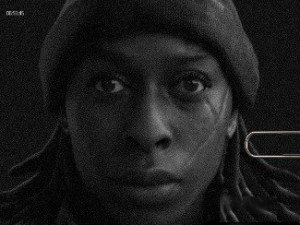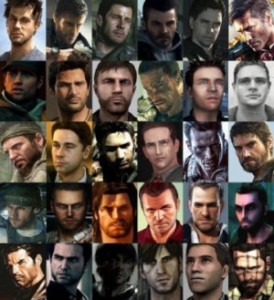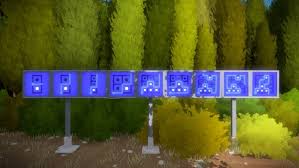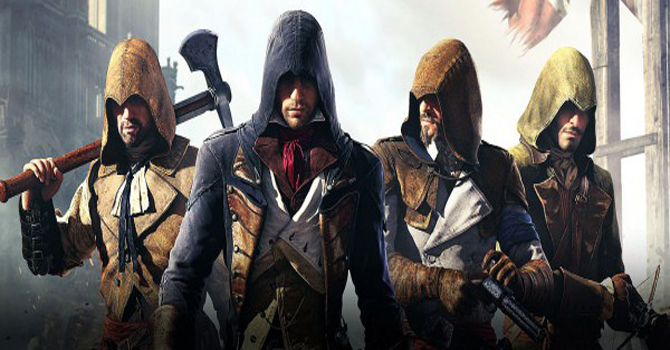I have been keeping an active tab counting the number of women of color in positions of power and control in video games. And before I proceed, I know someone will fill the comments with Purna and Shiva but I am looking for representation outside of the zombie-killing Black girl trope. And Aveline de Grandpre in Assassin’s Creed III: Liberation is super awesome, but who else do I have? As an avid gamer and a Black feminist, I relish in identifying someone who looks like me that embodies traits of a hero. And I’ve found her. Larae Barrett. But she’s a villain – well according to the game narrative she is being situated as a villain. But I see her as much more than that.
feminist, I relish in identifying someone who looks like me that embodies traits of a hero. And I’ve found her. Larae Barrett. But she’s a villain – well according to the game narrative she is being situated as a villain. But I see her as much more than that.
Let’s discuss her:
- She is a dark-skinned sister
- She has dreads
- She is not hypersexualized
- She is a BOSS!
Let’s discuss her role in the game.
- She a non-playable character
- She’s the leader of the Rikers, the escaped inmates from Rikers Island.
- She is known for her ruthlessness but has extreme competency to plan, organize, and lead
While she is not a playable character, situating her in this villainous role continues the narrative of the Black person as perpetual criminal. But she is more than that. The following video clip highlights the cutthroat nature (no pun intended) of her brutal tactics to remain in power:
What is she actually saying? In her speech, she actually evokes much rhetoric deployed in contemporary social movements to not be defined by your victimhood:
“You can turn that cry into a roar or you can turn it into a wimper…You can choose to be a victim. No matter where you at: penthouse, prison cell, or even free roaming your own streets…”
Viewed independent from the video, the above comments reveals the challenge that exists in overcoming victimhood and a victim status. Unfortunately, after she stated these lines she gutted a man in front of other followers. And this is more powerful than her important rhetoric. And this evokes fear in movements that rise up against the status quo: self-defense that gets redefined as threats of violence by those in positions of hegemonic power.
Larae Barrett discusses the need to reframe the impact of the disease from being a tragedy to being a teacher. The people will no longer be subject to the ‘uniforms’ but they will actually resist and fight back. This directly reflects the framework of anti-police brutality movements emerging from the Black Lives Matter movement: the lack of police legitimacy in communities of color because of the history of marginalization, oppression, racism, and violence.
 Game developers have the right to create whatever they want. I, too, have the right to critique whatever they create. But being deeply invested in the White Savior Industrial Complex reveals the inability of game developers to exist outside their traditional narratives and templates. Just as there is a possessive investment in the military/police industrial complex, where there is a growing market to profit and make money over true justice and reform, the gaming industry is invested in the White male as perpetual savior and hero. It’s like they created what is defined as a hero and it has no melanin and a set of balls.
Game developers have the right to create whatever they want. I, too, have the right to critique whatever they create. But being deeply invested in the White Savior Industrial Complex reveals the inability of game developers to exist outside their traditional narratives and templates. Just as there is a possessive investment in the military/police industrial complex, where there is a growing market to profit and make money over true justice and reform, the gaming industry is invested in the White male as perpetual savior and hero. It’s like they created what is defined as a hero and it has no melanin and a set of balls.
The increasing singular narrative deployed in games reveals either a complete lack of creativity or desire to maintain Whiteness and masculinity as ideological and standard operating frameworks. As Teju Cole suggests, the White Savior Industrial Complex is all about validating privilege.





One thought on “The Black Woman as Villain in The Division: Examining the Investment in the White Savior Industrial Complex”
I haven’t played the Division, but from what Austin Walker brought up in the Beastcast and others have online, there’s one line from LaRae that really stands out: “Just one more dead black body on the pile, right? Just nothing to you! So blind, all of you!”
That’s a really powerful line for something that would be typically considered “flavor text.” It blurs the lines between the fantasy of apocalyptic New York and reality. In so many games, the the apocalypse is something used to completely erase the prejudices and divisions of the past, with new ones suddenly superseding. (The most recent example that comes to mind is Fallout 4, where 1950s racism is replaced by synth and android paranoia.) LaRae’s line is a potent reminder that collapse of society does change things, but that nothing is ever gone completely. The palimpsest of institutional racism persists.
But the game does nothing with it. It’s casually mentioned, then never explored again. Then it gets coupled with the statements and actions you wonderfully explore in this article. Instead of creating a thick description (to borrow a term from anthropology) of LaRae, she fits neatly into the mold of most videogame villains: Homicidal psychopaths who kill the helpless and manipulate and exploit narratives as an excuse to kill. The potential racism that shaped LaRae into this resistance leader is completely ignored.
It’s a such a fucking shame. Her line “Just one more dead black body on the pile, right?” is so fucking good. Somewhere in Ubisoft, someone is aware – someone gets it. The entire encounter could be a chance for self-reflection. Not every game needs to be Spec-Ops: The Line -but neither does it need to be completely oblivious. The irony – that you have to kill her and she is indeed just one more body on a pile of objectives – is just so fucking self-evident, but still so potent. It just frustrates the hell out of me that none of it is expanded. If they do know and understand the issues they’re grazing, why don’t they just dive right in? What’s stopping them? It’s pretty clear that they aren’t ignorant of the issues, but that they aren’t willing to really grapple with them.
Really wonderful article Kishonna, and I’m really glad it got me to think about this stuff.